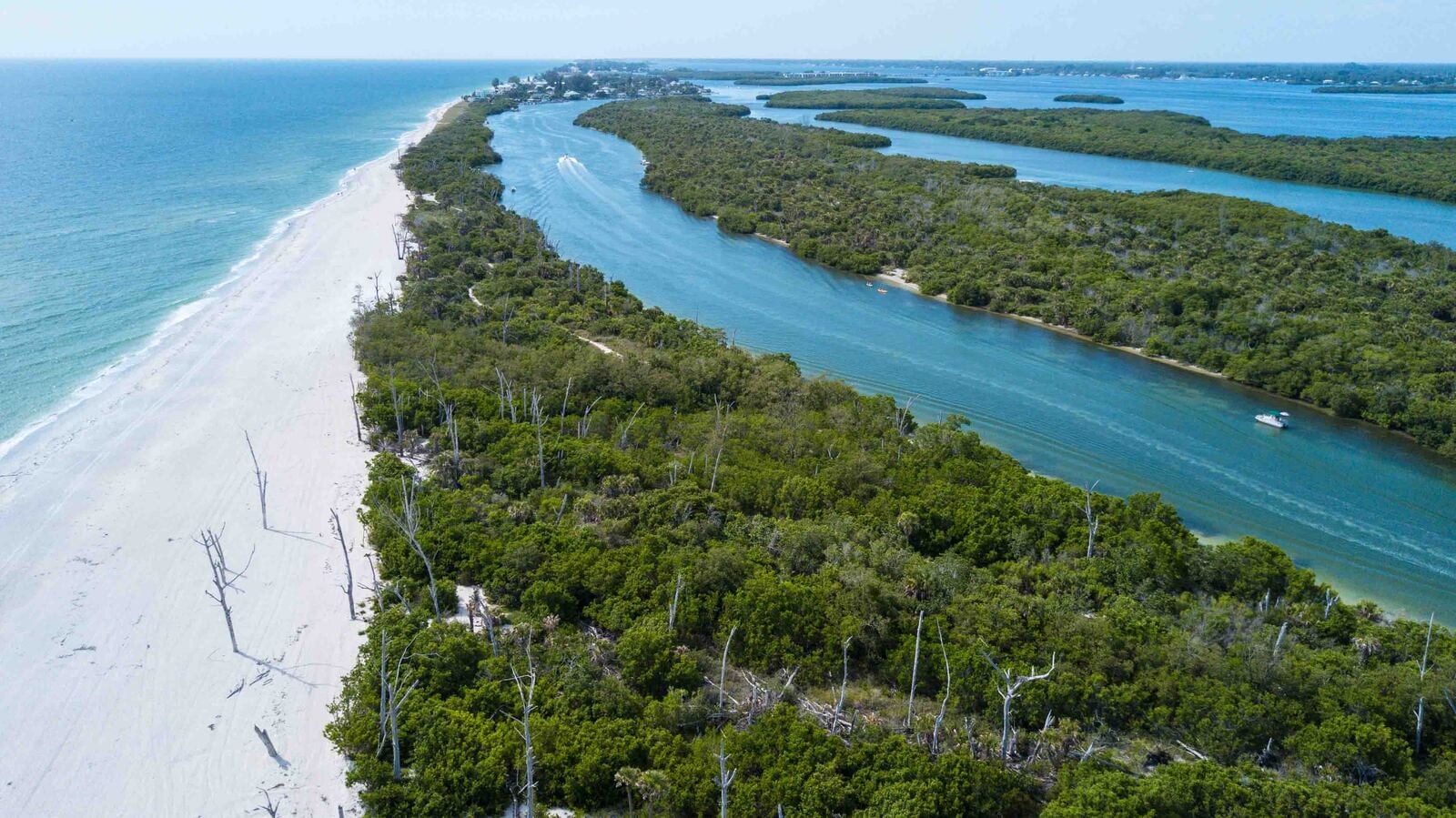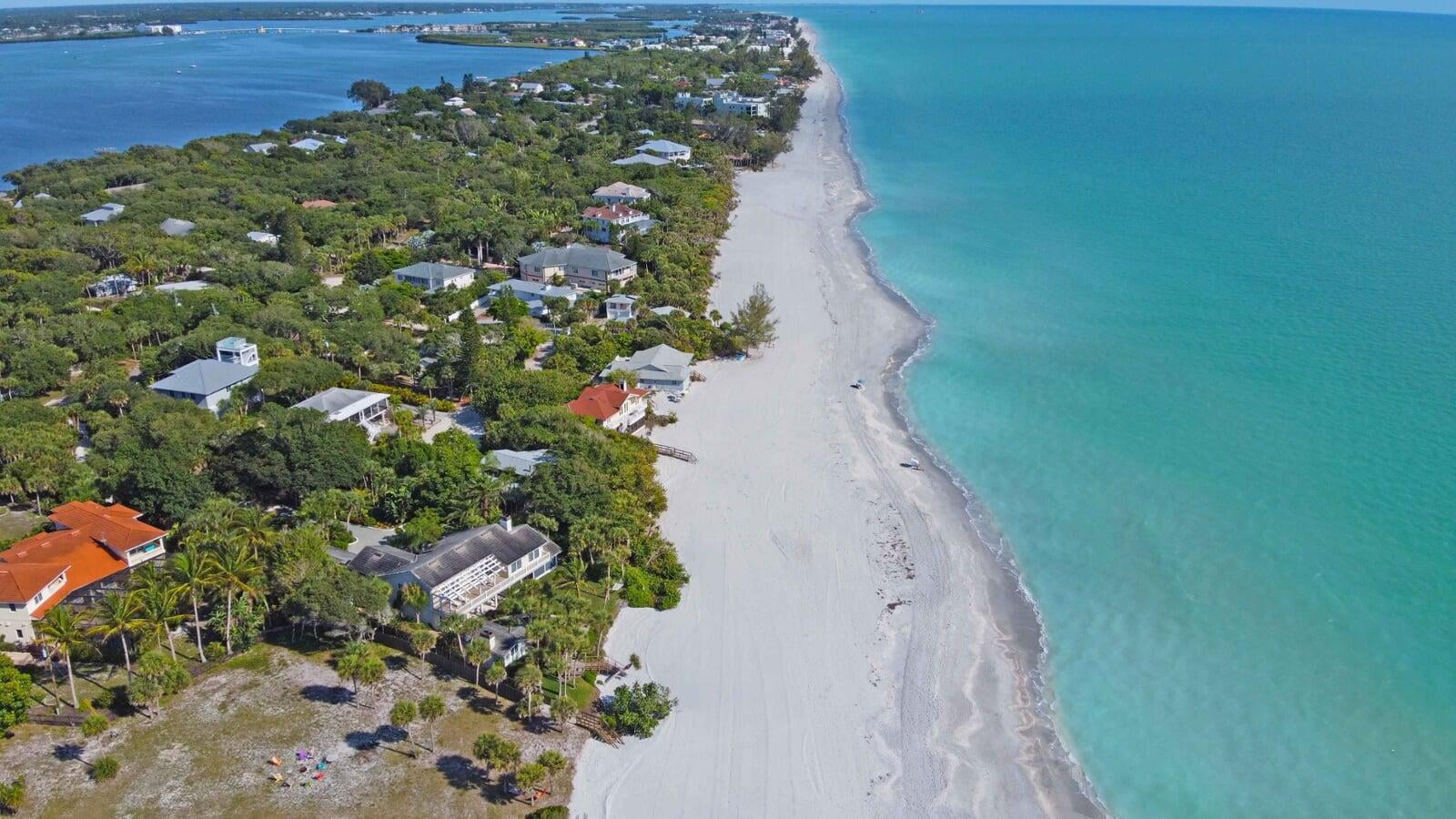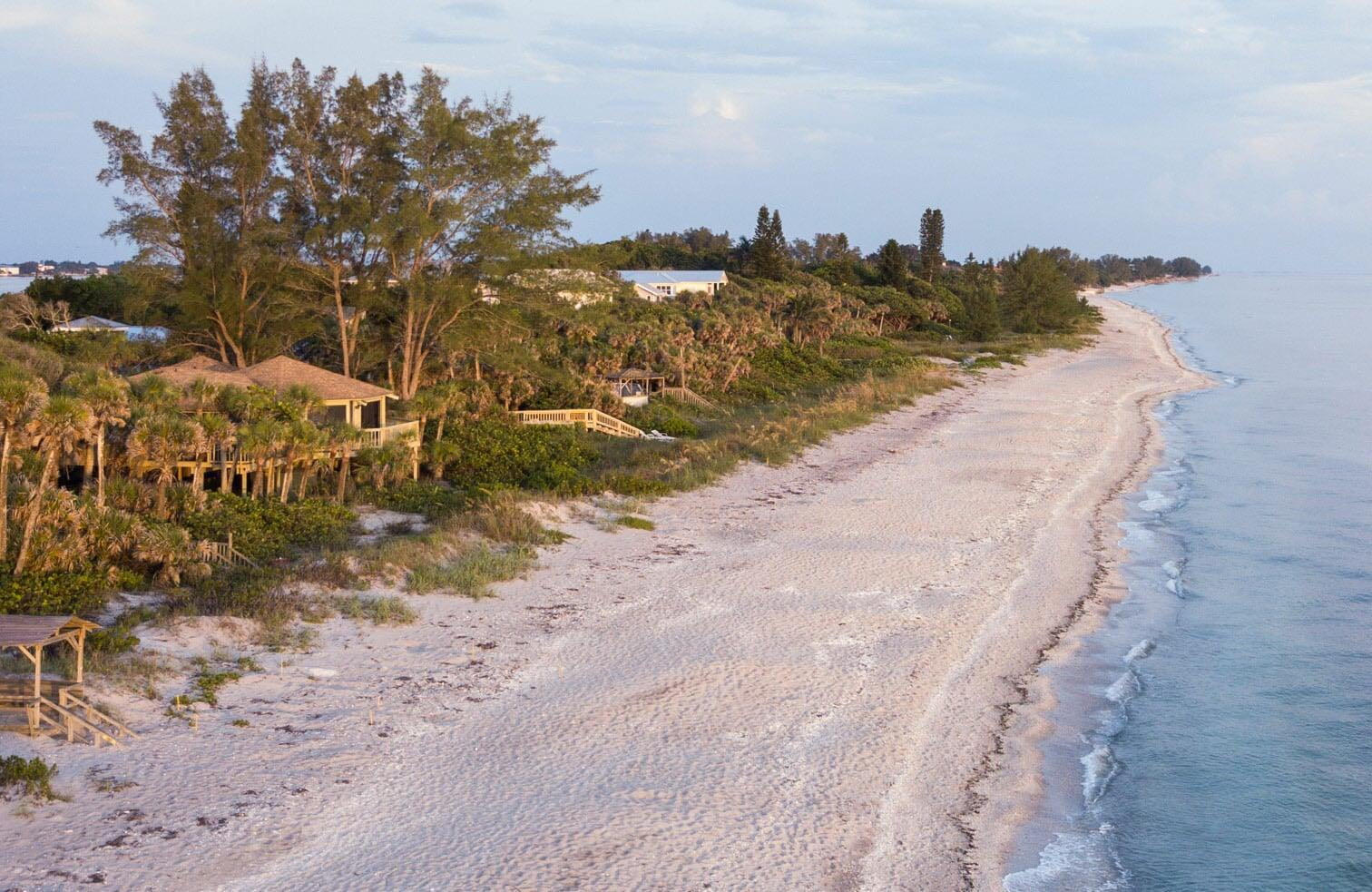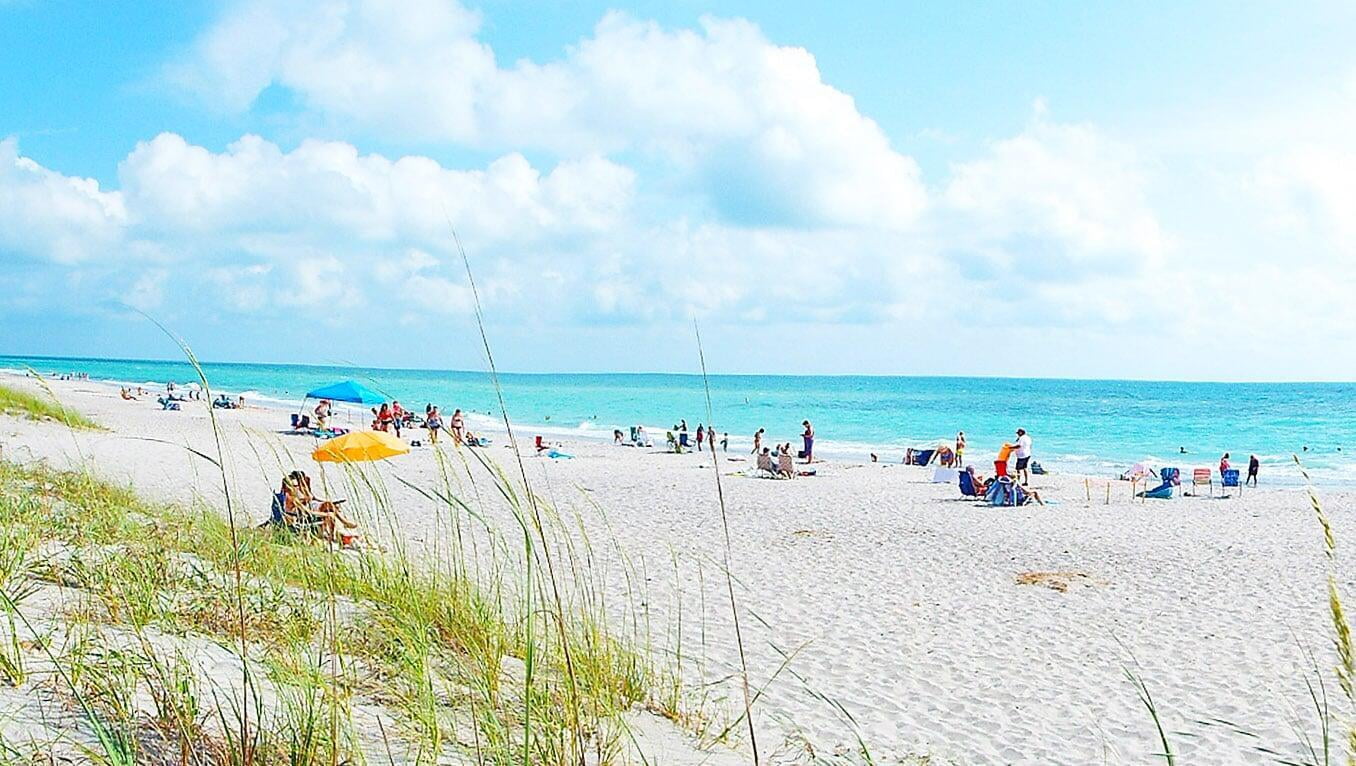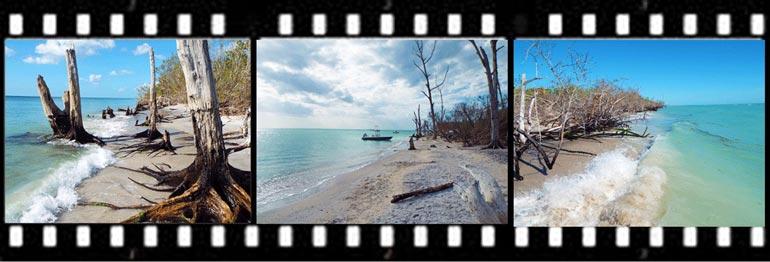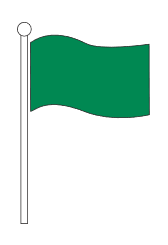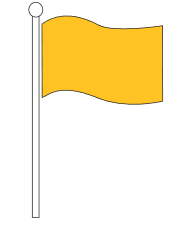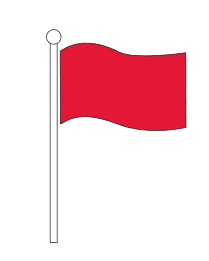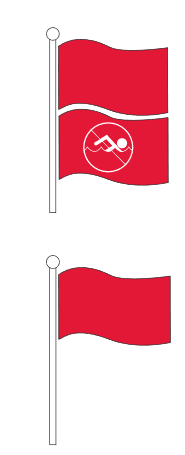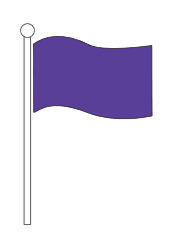Four beautiful Beaches
All four of Englewood's beaches are located on the 11-mile-lo barrier island of Manasota Key. Because there is no natural land bridge to the mainland, two modern drawbridges were needed to make the island accessible. One bridge is at the northern end of the island, and the other one almost at the southern end. The Mainland and the island are divided by a big body of water called "Lemmon Bay" where the Intracoastal Waterway runs thru.
Further south, the Intracoastal Waterway connects the Lemon Bay with an even bigger body of water, the "Charlotte Harbor Estuary," the second largest bay in Florida. This natural "harbor" covers 4,900 sq miles; 70% of that harbor is located in Charlotte County while 30% is in Lee County, which is the next county further south.
In General, all Gulf Beaches are on the Barrier Islands
You know it already, yes, all area beaches face the Gulf of Mexico. They are exclusively on the barrier islands, which are Manasota Key (where all four beaches accessible from Englewood are), Don Pedro Island (which can only be reached by boat or ferry), Little Gasparilla Island (only by boat), and Gasparilla Island (can be reached via bridge).
The four beaches that are available to pamper the local sun seekers and travelers who reside in Englewood are Stump Pass State Park Beach, Englewood Beach (previously known as Chadwick Beach), Middle Beach (also known as Blind Pass Beach), and Manasota Beach.
The beaches of Don Pedro and Little Gasparilla are more challenging to reach. The beaches on Gasparilla Island require a $6 fee for a toll bridge, but hey, you are on vacation! You are burning money like crazy anyway. What is a $6 price for a lovely day on the beach?
Beach Warning Flags - some information for non locals
Always ask the rangers or lifeguards if in doubt...
Beautiful and colorful flags are flying on the beach. Red, green, yellow...how nice is that.
But be careful, they want to tell you something. But what?
You will Love the green one:
Great. You know that one already. When the traffic light shows GREEN...you are ready to go. That does not mean that you are 100% okay. You still look left and right because somebody could make a mistake.
Therefore, you do the same when you go into the water. You could still experience a little current or "steep" one foot high waves, but otherwise, you are good to go.
Always look for sea creatures because they are color blind, There can always hide a stingray somewhere in the sand, especially in spring time, and that guy really "stings."
Hm, what does that mean?
A vibrant YELLOW flag does not necessarily mean that you won't get home alive, but something may be going on. It could indicate that there is a moderate surf or moderate current. Nothing really to worry about - just keep your eyes open.
Especially people from non-coastal areas have sometimes a problem with the definition of "moderate". What is a "moderate" surf or current? Some people tend to panic when they cannot stand anymore. If that is you - don't go too far out.
Well, just be careful. If you are not comfortable with 3 feet high waves, don't go into the water.
This Flag is more Serious!
When you see the RED flag - you run - but not into the water - away from it! This means high surf or high current or dangerous rip-current. Nothing you want to deal with unless you are training for the next "iron man" competition.
Unfortunately many people over-estimate their strength.
However, picture this: one cubic foot of water weighs 62.42 pounds. When you are facing a 6 ft (high) wave (4 ft wide), you are dealing with a lot of water and weight. It will not crush you, however, this is a lot of force and it will certainly knock you off your feet.
Red is Red - like a traffic light!
Some people ignore it and still go into the water. There are always people surfing in 30 foot waves, right? Well, they hopefully know what they are doing.
You think it can't get any worse?
You're wrong. Now you see TWO RED flags flying.
This means "absolutely NO" unless you are suicidal or you brought a busload of guardian angels with you. The two red flags could indicate that there are extremely powerful currents, dangerously high waves or a chemical/ biological contamination.
The waves are easy to detect, the current is already trickier. When high waves are pounding the beach the water needs to flow back into the Gulf somewhere. That strong current is called rip current.
The contamination part can be mean. You may see nothing. The water is calm, the sun is shining and you are not allowed to go into the water? What a joke.
But: You better Stay Out of the water when the lifeguards or park rangers tell you so! They don't want to spoil your day on the beach - they want to keep you healthy - or alive.
Okay, the water is calm, the green flag is flying but...underneath the green one there is this bright BLUE flag. What the hell is that?
"Dangerous Marine Life" is the message of this flag. Perfect! That's what you need when you want to hit the water. Well, this could be anything: man eating jelly fish, giant 100 foot squid, kicking sea horses or...man hunting killer sharks. OMG, now you are doomed!
I wouldn't care too much. Enjoy yourself in the water, you will survive! Most likely it means that jellyfish are in the area. But ask the ranger.
Well, yes, jelly fish can sting, and if you are allergic it can become life threatening. When you step on a sting ray it will, according to its name, sting you. As bad as it is, this sting, fortunately, doesn't terminate your life. However, the pain you are experiencing after the sting is good enough to ruin your vacation. Often, the sting is associated with an infection. Don't step on it. Do the sting ray shuffle!! However, if you do step on one don't brave it out. Stingrays have a bad habit, they don't disinfect their barbs before they hit. Go to a doctor.
When you see the blue flag flying, ask the ranger or lifeguard what is going on. Usually it is just a precaution, sometimes it is more than that. It is not always about the triangle shaped dorsal fin, the little critters are sometimes more dangerous.
When you go to the State Park you may see the yellow and the blue flag flying. Well, that is not really too helpful because the rangers intention is to cover their rear end with that combination.

